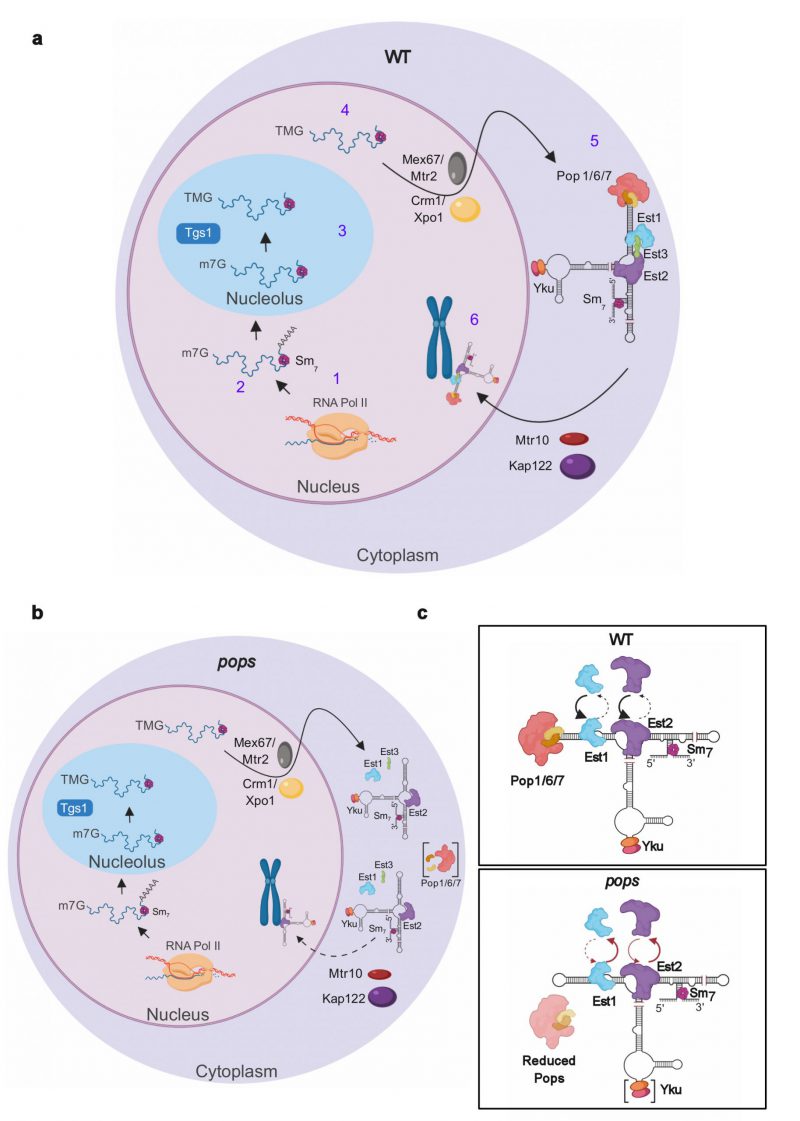Back to article: A new role for proteins subunits of RNase P: stabilization of the telomerase holoenzyme
image description
FIGURE 2: The stability and nuclear localization of telomerase is impaired in pop cells. (a) Steps in TLC1 biogenesis. 1) TLC1 is transcribed by RNA polymerase II with a 5' cap and can acquire a 3' polyadenylated tail. 2) TLC1 is bound by the Sm7 proteins that stabilize the RNA. 3) TLC1 is transported to the nucleolus where the 5' cap is hypermethylated by Tgs1. 4) Mature TLC1 lacking a polyadenylated tail is transported to the cytoplasm by nuclear export factors where 5) TLC1 assembles with the protein components to form the telomerase holoenzyme. 6) The mature telomerase is imported into the nucleus by import factors and binds telomeres. (b) In pop cells where Pop proteins are highly depleted (Pops in brackets), the stability of the Est1 and (to a lesser extent) Est2 binding to TLC1 is reduced leading to an unstable telomerase holoenzyme that is not recognized efficiently by import factors. As a result of this cytoplasmic accumulation, TLC1 is not accessible to the nucleases that degrade it. (c) In WT cells (top panel), Pop proteins promote the stable binding of Est1, Est2, and possibly Yku (bottom panel, brackets) to TLC1. In pop cells (bottom panel), these proteins still bind TLC1, but this binding is unstable. We propose that the Pop proteins act like chaperones to stabilize the higher-order structure of TLC1, which is needed for the stable association of proteins and formation of the telomerase holoenzyme. Images were made in BioRender (biorender.com).

